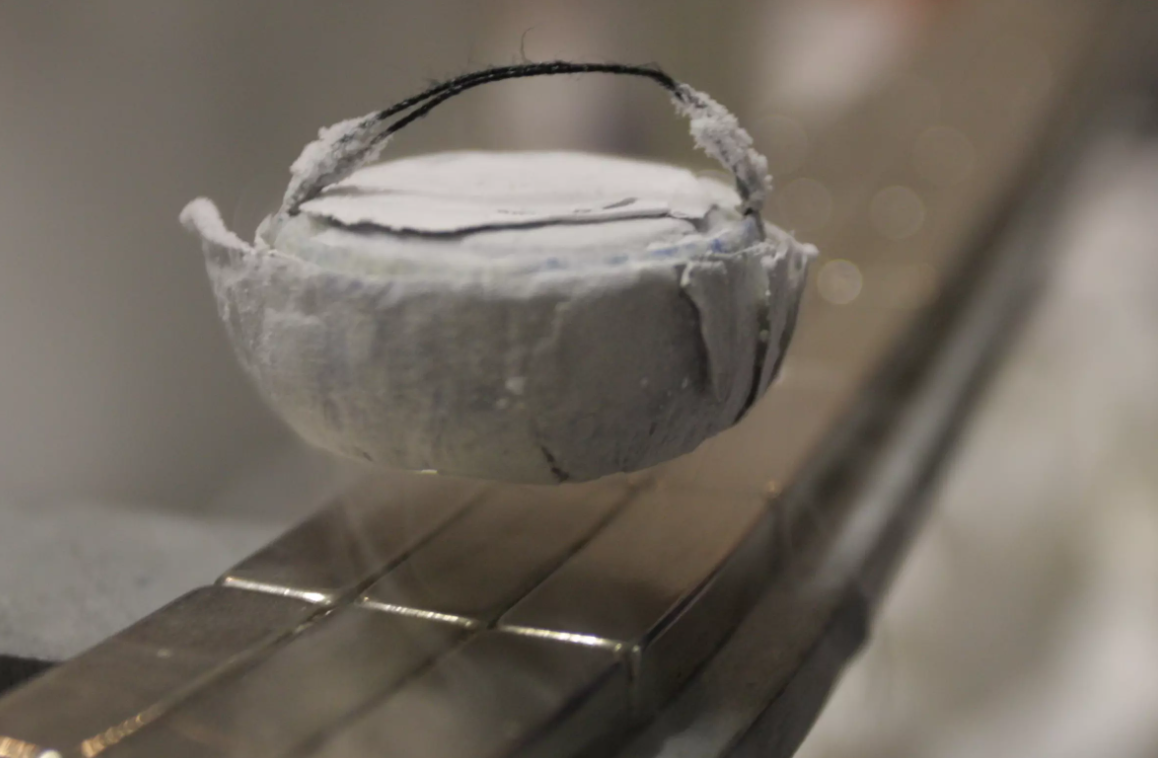TechMIX: Have they come up with the discovery of the century in Korea? Theoretically possible

It’s not just physics fans who have had a few busy days. In fact, in late July, two scientific papers appeared online that not only attracted attention, but also changed the schedules and research agendas at a number of labs around the world. In them, a team of Korean authors report that they have succeeded in creating a material that functions as a perfect superconductor even at temperatures above 100 °C. It is supposed to be a crystalline substance containing mainly lead, phosphorus, oxygen and copper.
Superconductivity, i.e. (among other things) the ability to conduct an electric current completely without loss, has been known for about a century. At first, many physicists thought it might be an exotic property occurring at temperatures only around absolute zero. Only gradually did it become apparent that there was no reason why superconductors could not exist at higher temperatures. The greatest practical success so far has been superconductors usable in 1986, for which cooling with liquid nitrogen is sufficient (boiling point is -195 °C). This excited the scientific community so much that the Nobel Prize was awarded for this discovery in 1987. For an award committee, this is quite an unusual rate. The dream, of course, is a material that will be superconducting at normal temperatures. After all, a liquid nitrogen cooling circuit cannot be made into a computer, a telephone, or even a generator in a power station or on a train line several hundred kilometres long. These are just some of the possible applications.
Room-temperature superconducting materials would lead to many new practical applications, including the generation and distribution of electricity with fewer losses and billions of dollars of savings per year, ultra-fast and energy-efficient computer chips, and very powerful magnets that could be used to levitate trains or build fusion reactors.
In addition to being perfectly conductive themselves, objects made of superconducting material figuratively “cannot tolerate” magnetic fields. They can perfectly displace it from themselves, which means that they levitate above other magnets (for a brief explanation, see the website of the Institute of Physics). This is why they can effectively float, for example, magnetic trains over the track.
Theoretically (depending on the properties of the material) they can also be used to make very efficient electromagnets that work without losses when switched on. So if, for example, the temperature of the material does not rise above a critical limit, this then makes for a very expensive repair, as they know for example at the LHC accelerator…
Another promising application would be more powerful computers that operate with much less losses than today’s ones. Superconductors are also an integral part of quantum computer concepts. If they can be made into circuits that do not need deep cooling, it should be significantly easier to build more powerful quantum computing machines.
A practical superconductor operating at normal temperatures would simply be a significant technological leap forward. A Nobel Prize for the discoverer is virtually 100% certain. The committee’s biggest problem will be to select three scientists from the eventual team to receive the prize and to divide it among them as fairly as possible. How does it all work? The authors of the discovery speculate that the cause of superconductivity is the partial replacement of one element in the crystal lattice by another. The original material contains only lead in the crystal lattice, but they have managed to “squeeze” some of it out and get some copper into the material instead.
The copper is, in very simplistic terms, slightly “smaller”. So when the chemical reaction caused their partial replacement, the whole material literally became smaller. In the authors’ measurements, its volume dropped by 0.5 per cent, which is quite large for similar phenomena. However, in Asia, but not only there, the publication has aroused great interest among experts. This was undoubtedly helped by a presentation by one of the authors at an international conference in Korea on 28 July. As we do not know at this time whether the authors have provided anyone with the material for independent verification, a number of laboratories around the world, including at least one in the Czech Republic, have embarked on an attempt to replicate the experiment.
Some researchers from China and other countries have even streamed or are streaming their experiments (you can track them down, but don’t expect anything exciting). There have been claims of successful replication (example from China), but they are by no means completely “bulletproof”. There have also been several papers published on professional servers describing unsuccessful efforts. However, it is simply too early to draw clear conclusions.
Source, photo: twitter.com
Author of this article
WAS THIS ARTICLE HELPFUL?
Support us to keep up the good work and to provide you even better content. Your donations will be used to help students get access to quality content for free and pay our contributors’ salaries, who work hard to create this website content! Thank you for all your support!





OR CONTINUE READING